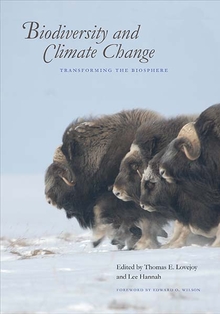Lessons from Amazonia
WARNING
You are viewing an older version of the Yalebooks website. Please visit out new website with more updated information and a better user experience: https://www.yalebooks.com
The Ecology and Conservation of a Fragmented Forest
Deforestation is occurring at an alarming rate in many parts of the world, causing destruction of natural habitat and fragmentation of what remains. Nowhere is this problem more pressing than in the Amazon rainforest, which is rapidly vanishing in the face of enormous pressure from humans to exploit it. This book presents the results of the longest-running and most comprehensive study of forest fragmentation ever undertaken, the Biological Dynamics of Forest Fragments Project (BDFFP) in central Amazonia, the only experimental study of tropical forest fragmentation in which baseline data are available before isolation from continuous forest took place.
A joint project of Brazil’s National Institute for Research in Amazonia and the U.S. Smithsonian Institution, the BDFFP has investigated the many effects that habitat fragmentation has on plants, invertebrates, and vertebrates. The book provides an overview of the BDFFP, reports on its case studies, looks at forest ecology and tree genetics, and considers what issues are involved in establishing conservation and management guidelines.
A joint project of Brazil’s National Institute for Research in Amazonia and the U.S. Smithsonian Institution, the BDFFP has investigated the many effects that habitat fragmentation has on plants, invertebrates, and vertebrates. The book provides an overview of the BDFFP, reports on its case studies, looks at forest ecology and tree genetics, and considers what issues are involved in establishing conservation and management guidelines.
Richard O. Bierregaard, Jr., is assistant professor (adjunct) in biology at University of North Carolina, Charlotte. Claude Gascon is vice president for field support at Conservation International, Washington, D.C. Thomas E. Lovejoy is chief biodiversity adviser and lead specialist for Latin America and the Caribbean, the World Bank. Rita Mesquita is in the ecology department at the Instituto Nacional de Pesquisas da Amazonia, Brazil.
"This update of the mighty Forest Fragments Project reveals the dimensions of complexity in the rain forest ecosystem, and suggests the best ways to address them in scientific research and for conservation practice."—E.O. Wilson
“No other book accomplishes what is attempted in this volume. It will certainly become a classic.”—Martha Groom, University of Washington
“It is my hope that this book is widely read by those responsible for management of this precious ecosystem, and will be of great interest to conservation biologists, ecologists and students of these disciplines.”—Wildlife Activist
“This over-20-years-and-counting project is the largest and most ambitious investigation into the effects and consequences of habitat fragmentation in the tropics. . . . A timely summary of progress and conclusions that can now hopefully be translated into effective application throughout the world. . . . Lessons from Amazonia is a must read for tropical biologists, environmental managers, and government policy makers.”—Burton L. Kim, The Canadian Field-Naturalist
ISBN: 9780300084832
Publication Date: December 11, 2001
Publication Date: December 11, 2001
496 pages, 7 x 10
93 b/w + 13 color illus.
93 b/w + 13 color illus.













